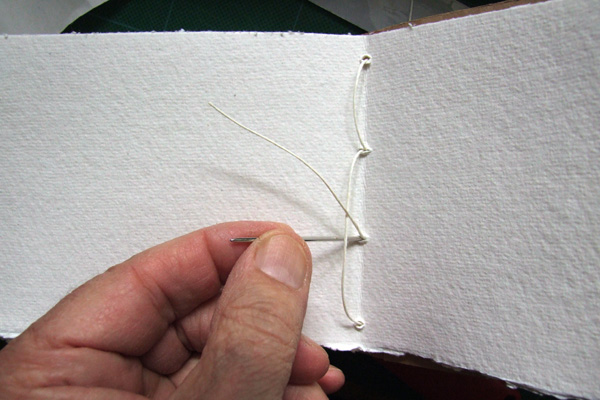Sewing a single section ~ the final stitch
The picture shows the centre spread of a single section booklet as it is about to be completed.

The end of the starting thread lies loose. The various stitches need tidying. The needle has passed through the final hole from the outside. Care has been taken to keep the needle on the opposite side of the stitch of thread that was made some while ago. The finishing thread is about to be pulled through. The next stage is to work all the threads to be sufficiently tight, then tie a simple knot so that it ties around the stitch. A second simple knot (to make a reef knot) or a tiny dab of glue will ensure that the threads will never work loose.
Further notes....Four hole stitching, with three loops of thread on the outside, is unusual in some people's eyes. It may be different, but there is nothing at all wrong with it. That the knot is not symmetrical is also "unusual". In this case it is deliberate. The sewing of the adjacent sections will be upside down compared with this one. In this way the bulge of the knot is spread out, a little, over the length of the spine. You may ask "How are the adjacent sections joined (there are no kettle stitches!)" That is the subject of another page
[115071]. The use of a very thick thread helps to show it in the photograph, but also readies the book for years of rough wear and tear, as befits a pocket notebook. Tear will be minimised by thick and strong handmade all-cotton paper.



